Welcome to our comprehensive guide on crafting an effective IT helpdesk service level agreement (SLA). Whether you're a business owner or an IT manager, understanding the nuances of an SLA is essential for ensuring smooth operations and exceptional service delivery. In this article, we'll explore the key components that make up a robust SLA, along with tips and templates to help you get started. So, dive in with us and discover how to elevate your IT services by reading more!

Response Time and Prioritization
A Service Level Agreement (SLA) for an IT helpdesk outlines critical aspects such as response time and prioritization of support requests. For instance, priority levels may include Critical (issues causing system outages, requiring a response within 30 minutes), High (major functionality impact, response within 1 hour), Medium (minor issue affecting operations, response within 4 hours), and Low (general inquiries or non-urgent issues, response within 24 hours). This framework ensures that users, such as employees at a corporate office or students in a university, receive timely assistance in addressing technical problems, facilitating business continuity and enhancing user experience. Metrics gathered from resolving incidents allow for continuous improvement and monitoring of performance against the agreed standards.
Resolution Timeframes
Resolution timeframes in IT helpdesk service level agreements (SLAs) define the expected duration required to resolve various types of incidents or service requests. For instance, critical incidents, such as major network outages affecting hundreds of users, may be prioritized for resolution within 1 hour. High-priority issues, like software failures that disrupt business operations, could target a 4-hour resolution timeframe. Medium-priority requests, including password resets or minor technical issues, may generally expect a resolution within 1 business day. Low-priority items, such as user inquiries about system features, are often assigned a 3-day timeframe for resolution. Clear communication regarding these timeframes is essential for managing expectations between users and IT support teams, ensuring accountability, and maintaining overall service quality.
Support Availability and Channels
IT helpdesk service level agreements (SLAs) define the parameters of support availability and communication channels for users. Support availability typically includes coverage hours, for example, 8:00 AM to 8:00 PM from Monday to Friday, excluding public holidays. Users may access helpdesk services through multiple channels, including dedicated email support, phone assistance, and live chat on the organization's IT portal. Response times are crucial, often guaranteed within a specific timeframe, such as 1 business hour for critical issues and 4 business hours for non-critical inquiries. Documentation resources such as FAQs and troubleshooting guides are also available on the IT portal, ensuring users have self-service options for common issues.
Incident Escalation Procedures
Incident escalation procedures within IT helpdesk service level agreements typically outline defined steps for addressing unresolved issues. For instance, a Tier 1 support technician may initially respond to incidents, assessing them within 30 minutes (or less). If the issue remains unresolved after a designated timeframe (e.g., 2 hours), it escalates to a Tier 2 technician with specialized expertise in network issues or software troubleshooting. If the situation persists, escalation to the management team occurs, which may include project managers or IT directors, typically within 24 hours. Communication is paramount - customers receive updates at each escalation stage through designated channels (email, internal tickets). This process ensures timely resolution while upholding service quality standards.
Performance Metrics and Reporting
The IT helpdesk service level agreement (SLA) outlines essential performance metrics critical for evaluating the efficiency and effectiveness of support services. Response time refers to the duration taken to acknowledge and react to a support request, typically limited to 1 hour for urgent issues, 4 hours for high-priority concerns, and 1 business day for standard requests. Resolution time represents the time taken to effectively address and resolve reported incidents, generally aimed at completing high-priority tickets within 24 hours and standard tickets within 3 business days. Customer satisfaction score is a vital metric collected via post-interaction surveys, with target scores ideally set over 85%. The reporting frequency includes monthly reviews of these metrics, allowing stakeholders to assess performance trends, compliance with established benchmarks, and identify areas for ongoing improvement.
Letter Template For It Helpdesk Service Level Agreement Samples
Letter template of IT helpdesk service level agreement for internal stakeholders
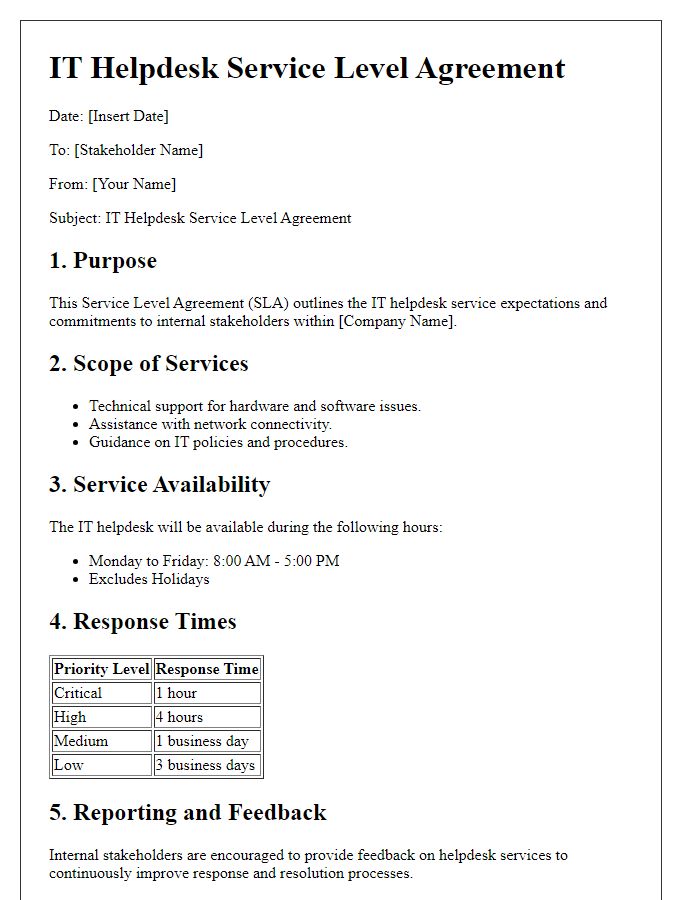
Letter template of IT helpdesk service level agreement for external clients
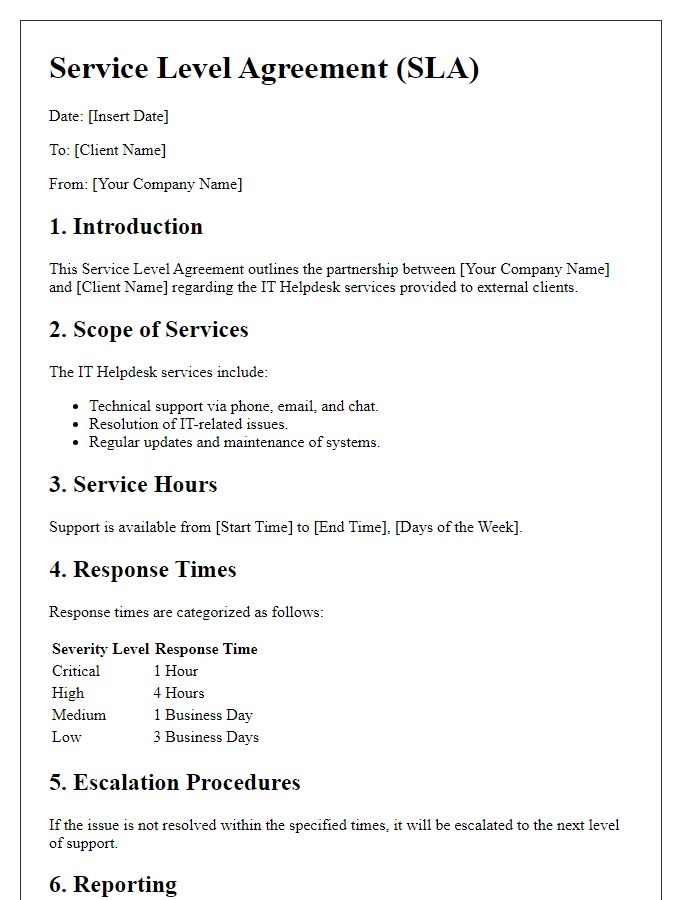
Letter template of IT helpdesk service level agreement for critical incident response
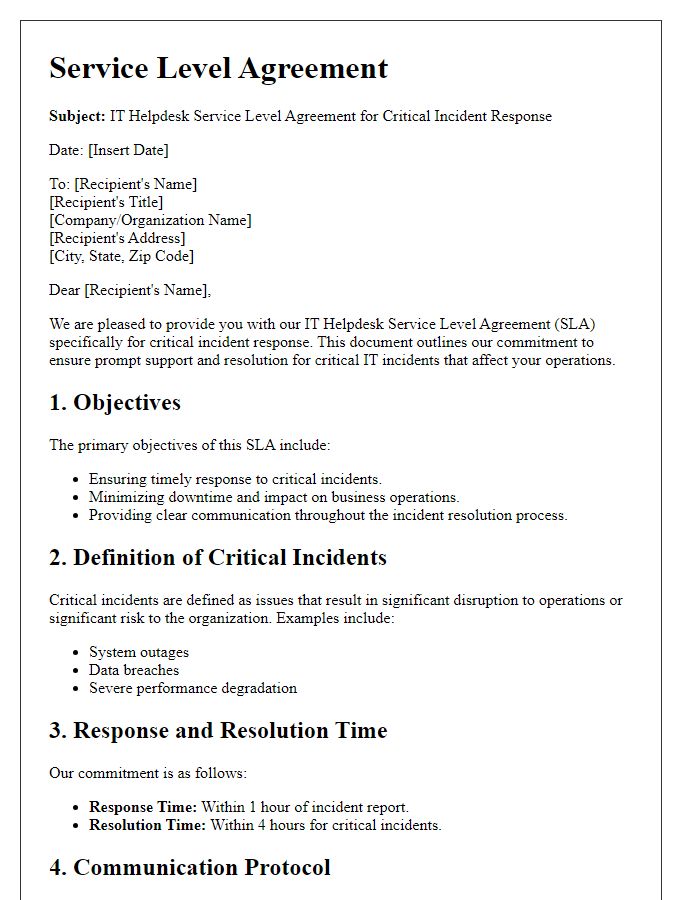
Letter template of IT helpdesk service level agreement for software support
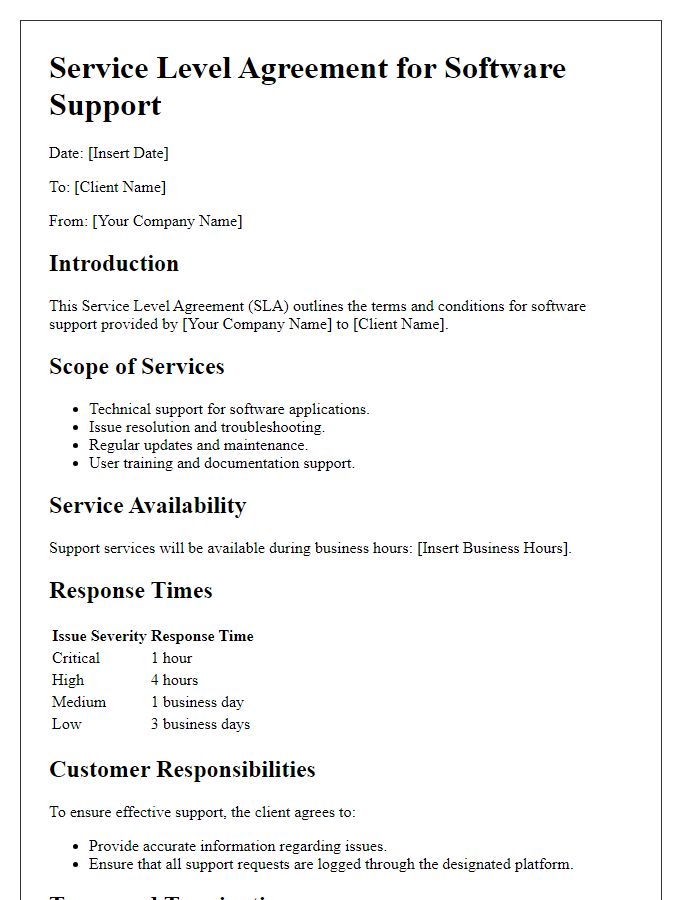
Letter template of IT helpdesk service level agreement for hardware maintenance
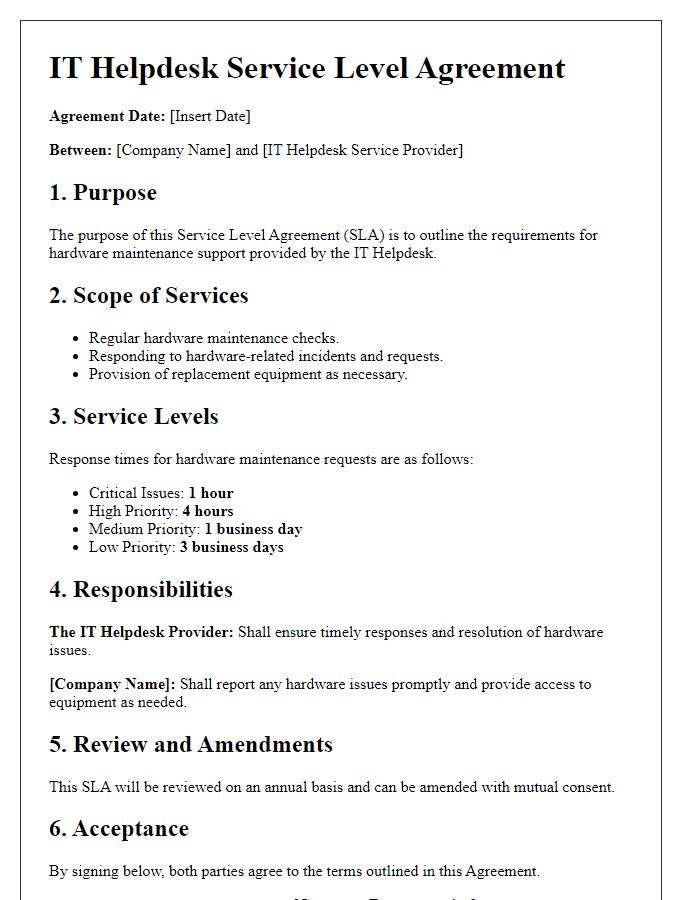
Letter template of IT helpdesk service level agreement for remote assistance
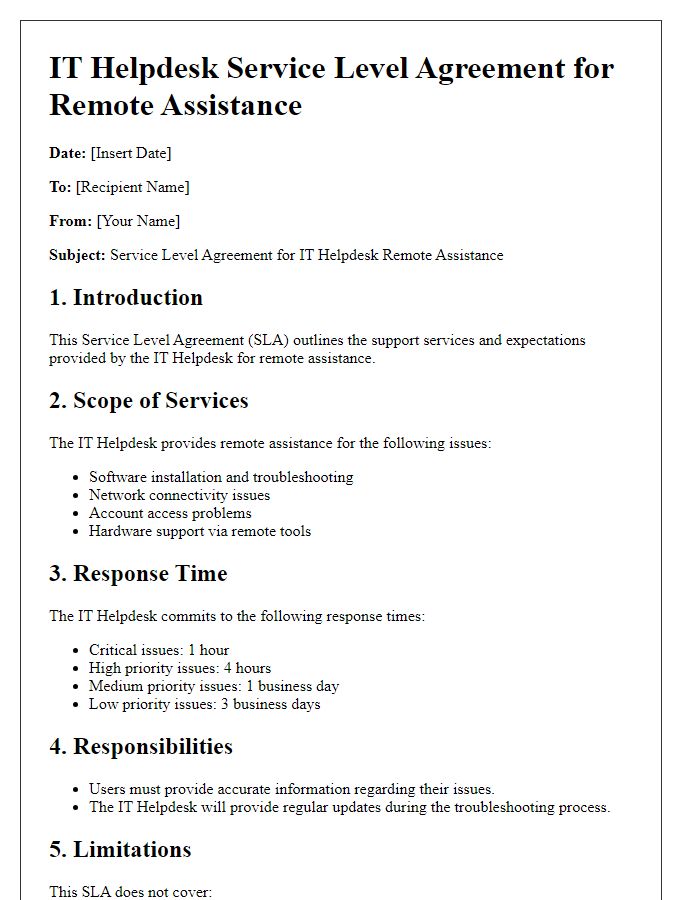
Letter template of IT helpdesk service level agreement for on-site support
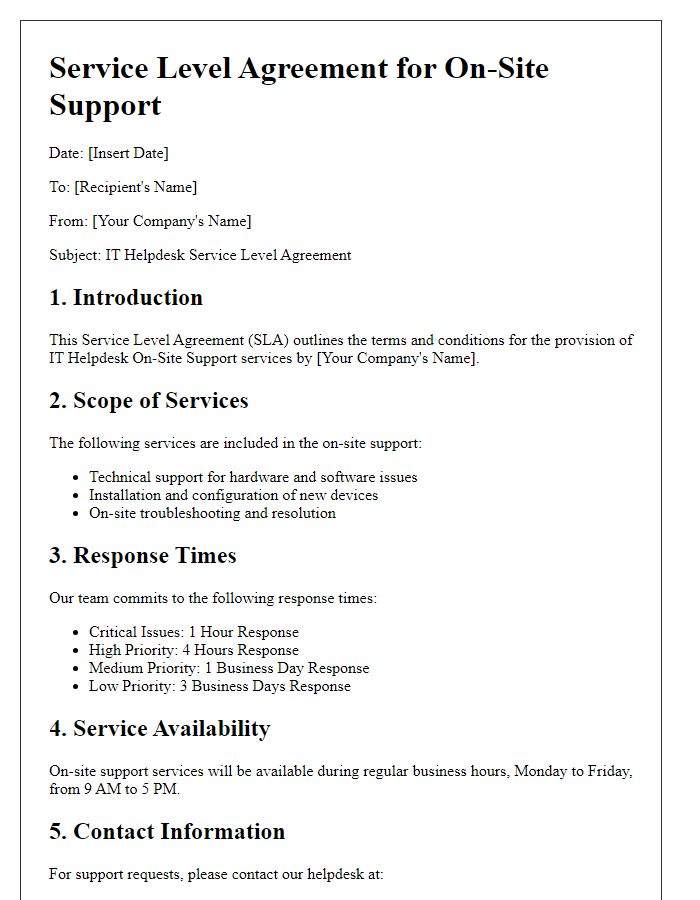
Letter template of IT helpdesk service level agreement for escalation procedures
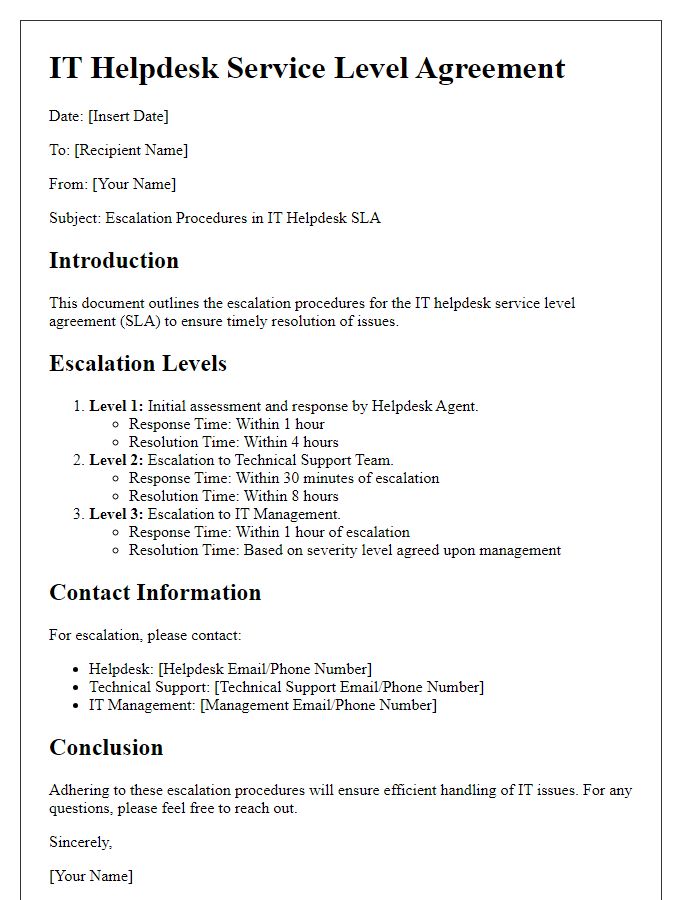
Letter template of IT helpdesk service level agreement for performance metrics
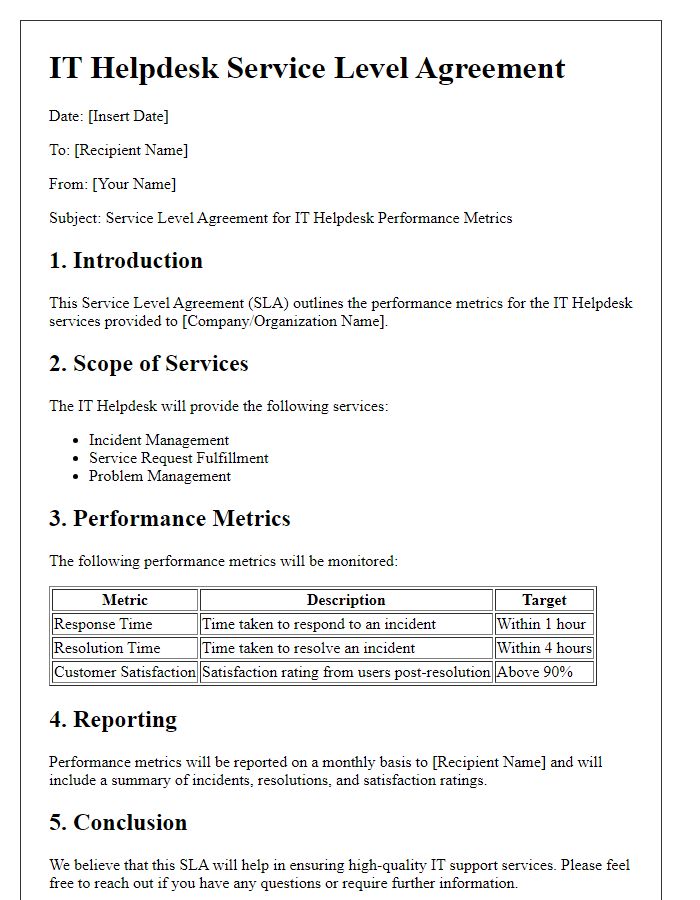

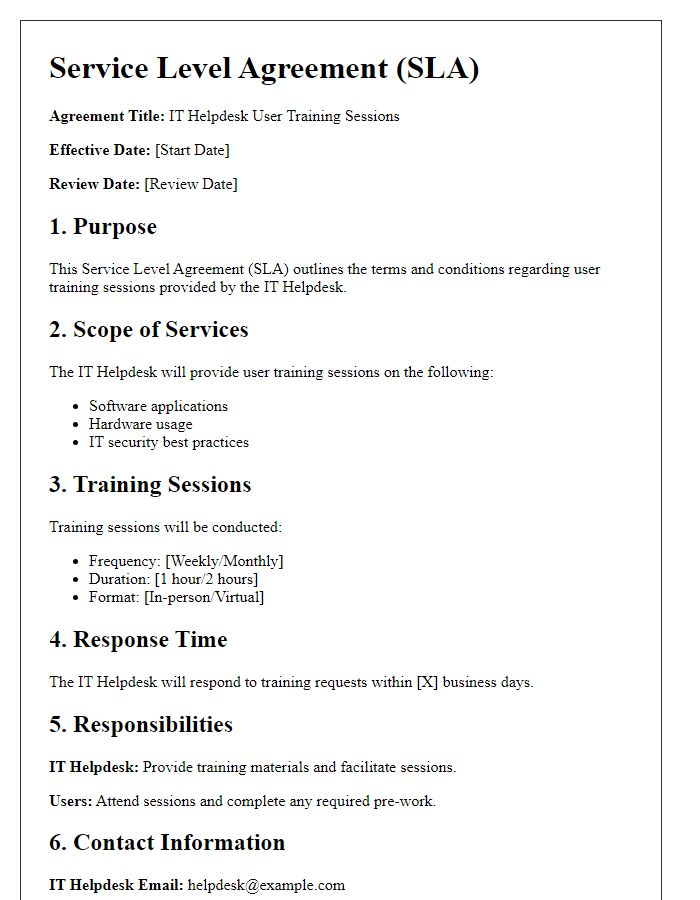

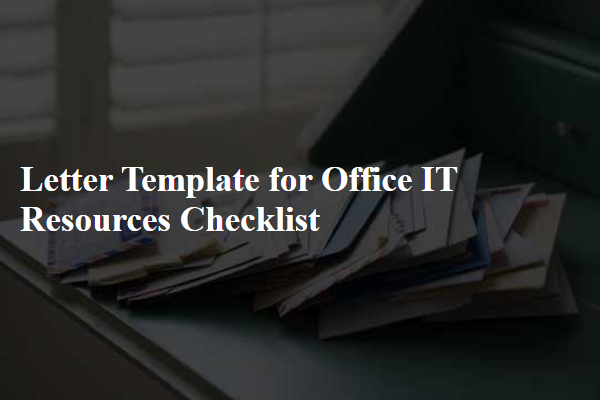
Comments